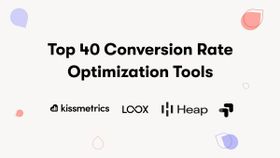One-to-One Marketing: Definition, How-To, Benefits and Tips
What is one-to-one marketing, do you need it, and if yes, how do you do it? We're breaking down everything for you in this article, so keep reading and find out more.
Updated January 31, 2025.

The way people buy online is changing -- it's not that retailers are getting smarter, consumers are just becoming more demanding. It's also that customers are starting to expect a personalized experience when they shop, similar to what they would experience in a brick-and-mortar store (plus all the benefits that come with online shopping.)
That's where one-to-one marketing comes in.
The goal of one-to-one marketing is to create stronger relationships with customers by providing them with tailor-made messaging, offers, and experiences that are relevant to their unique interests and behaviors.
How to do one-to-one marketing successfully in 2025?
We've asked Mayple-vetted eCommerce and Shopify experts and they gave us their two cents. Keep reading and find out more.
What is one-to-one marketing
One-to-one marketing is a personalized marketing approach that tailors messages, offers, and customer experiences to individual preferences, needs, and behaviors. By leveraging data and advanced analytics, businesses can create unique interactions for every customer, making them feel valued and understood.
This method fosters stronger relationships and ultimately drives business growth, as it moves beyond a one-size-fits-all strategy to focus on delivering highly relevant and targeted experiences.
Abm vs one-to-one marketing
Account-based marketing (ABM) and one-to-one marketing are often compared due to their focus on personalization. However, there are key differences between the two. ABM focuses on tailoring marketing efforts to high-value accounts, treating each account as a unique market. It is highly targeted and works best in a B2B setting.
On the other hand, one-to-one marketing goes deeper into personalizing interactions for individual customers, irrespective of whether they belong to a large corporate account or are individual consumers. While ABM is account-centric, one-to-one marketing is truly customer-centric.
In some acceptions, one-to-one marketing is a branch of ABM marketing (along with one-to-few and one-to-many), and together they create a "blended ABM approach".
(Source)
Personalized marketing vs one-to-one marketing
Personalized marketing and one-to-one marketing share similarities, but they are not the same. Personalized marketing involves tailoring content or campaigns to segments of customers based on shared preferences or behaviors.
For example, sending a promotional email to all customers who purchased a specific product. One-to-one marketing takes this further by addressing customers on an individual level, using their unique data to craft messages or offers that feel exclusive to them. While personalized marketing is about addressing groups, one-to-one marketing is about creating a dialogue with a single person.
Why should you opt for one-to-one marketing
One-to-one marketing offers numerous advantages for businesses aiming to enhance customer relationships and achieve measurable growth. Let’s explore the key benefits.
More cross-sales
One-to-one marketing enables businesses to recommend complementary products or services that align with a customer’s specific preferences or past purchases. This personalized approach increases the chances of cross-selling, as customers are more likely to purchase additional products when they feel the recommendation is relevant to their needs.
Reduced customer attrition
By creating tailored and meaningful interactions, one-to-one marketing helps businesses build trust and loyalty with their customers. When customers feel valued and understood, they are less likely to leave for competitors. Reducing customer attrition not only saves costs on acquiring new customers but also leads to more predictable revenue streams.
Increased customer satisfaction
Personalized experiences make customers feel appreciated, leading to higher levels of satisfaction. One-to-one marketing caters to individual preferences, ensuring that customers receive exactly what they need. This bespoke approach enhances their overall experience and fosters a positive perception of your brand.
Faster sales cycles
When marketing efforts are tailored to individual customers, the sales cycle becomes more efficient. Personalized interactions address customers’ specific pain points and needs, helping them make quicker decisions. This reduces the time spent nurturing leads and accelerates the path to purchase.
Improved PPC and retargeting
One-to-one marketing can significantly enhance the performance of pay-per-click (PPC) campaigns and retargeting efforts. By using customer data to create highly personalized ads, businesses can ensure their messages resonate with their audience. As a result, click-through rates and conversion rates improve, making campaigns more cost-effective.
Higher engagement on social media
Social media is a powerful channel for one-to-one marketing. By personalizing interactions, whether through direct messages, comments, or tailored content, businesses can foster deeper connections with their audience. This approach leads to higher engagement, as customers are more likely to interact with content that feels relevant to them.
The four steps of a one-to-one marketing strategy
Implementing a successful one-to-one marketing strategy requires a structured approach. Here are the four essential steps.
Identifying your audience
The first step in one-to-one marketing is identifying your audience. This involves collecting and analyzing data to understand who your customers are, their preferences, behaviors, and pain points. By segmenting your audience, you can identify which customers would benefit most from personalized interactions.
Differentiating your customers
Not all customers are the same, so it’s important to differentiate them based on their unique characteristics. This could involve categorizing them by demographics, purchase history, or engagement levels. Differentiation helps you prioritize high-value customers and tailor your messaging accordingly.
Interacting with your audience
Once you know your customers, the next step is to engage with them on their preferred channels. Whether through email, social media, live chat, or direct interactions, your communication should be personalized and relevant. By addressing their specific needs and concerns, you can build meaningful connections.
Adapting your business behavior
The final step is adapting your business practices to align with customer expectations. This means continually refining your approach based on feedback, data insights, and changing customer preferences. Flexibility and responsiveness are key to maintaining successful one-to-one marketing efforts over time.
The connection between one-to-one marketing and design thinking
Design thinking and one-to-one marketing share a common goal of creating user-centered experiences. Applying the principles of design thinking can enhance your one-to-one marketing strategy by focusing on empathy, creativity, and iteration.
Empathize
Empathy is the foundation of both design thinking and one-to-one marketing. By understanding your customers’ emotions, needs, and challenges, you can create marketing messages and experiences that resonate on a deeper level.
Define
Defining the problem is essential in design thinking and plays a crucial role in one-to-one marketing. Clearly identifying what your customers need allows you to craft solutions and messages that address their specific concerns.
Ideate
Once you understand the problem, the ideation phase involves brainstorming creative solutions. In one-to-one marketing, this could involve generating ideas for personalized offers, content, or communication strategies.
Prototype
In design thinking, prototyping means creating a version of your solution to test its effectiveness. Similarly, in one-to-one marketing, you can develop and test personalized campaigns on a smaller scale before rolling them out to a larger audience.
Test
The final step is testing your solution with real customers. Gather feedback, analyze performance metrics, and refine your approach to ensure your one-to-one marketing efforts are as effective as possible.
(Source)
How to start small with one-to-one marketing
One-to-one marketing may seem daunting, but you don’t have to overhaul your entire strategy at once. Starting small allows you to experiment and build on your successes. Begin by identifying a specific customer segment that would benefit the most from personalized interactions.
Focus on one or two channels, such as email or social media, to test your approach. Use data insights to craft tailored messages and monitor the results. As you gain confidence and see positive outcomes, you can gradually expand your one-to-one marketing efforts.
Remember that leadership buy-in and a clear strategy are key to success. By continuously refining your approach and keeping customer needs at the forefront, you can build long-lasting relationships with your audience through one-to-one marketing.
One-to-one marketing channels
There are several channels you can use to execute one-to-one marketing. Each channel offers unique opportunities to connect with your customers on a personal level.
Website
Your website is a powerful tool for one-to-one marketing. By using data such as browsing history or past purchases, you can customize the user experience. For instance, showing recommended products or personalized greetings can make the website feel more engaging.
Live chat
Live chat allows for real-time personalized interactions. You can address customer questions and concerns immediately, tailoring responses based on their specific needs. This builds trust and enhances the overall customer experience.
Email remains one of the most effective channels for one-to-one marketing. Personalized emails, such as product recommendations, birthday greetings, or exclusive offers, can strengthen customer relationships and drive conversions.
Social media
Social media platforms provide a space for direct and personalized communication with customers. By responding to comments, sending direct messages, or sharing tailored content, you can create meaningful connections and boost engagement.
Direct personal interactions
Face-to-face or direct interactions, whether in-store or through virtual meetings, offer opportunities for highly personalized engagement. These interactions can help you build strong, lasting relationships with your customers.
Types of one-to-one marketing programs
There are various types of one-to-one marketing programs that businesses can implement to enhance customer relationships and drive growth. Although not limited to these, the following make for good starting points:
Loyalty programs
Loyalty programs are a great way to reward customers for their continued support. By offering personalized rewards based on their preferences or purchase history, you can encourage repeat business and build long-term loyalty.
Recommended products
Recommending products tailored to a customer’s needs or interests is a core aspect of one-to-one marketing. By using data analytics, you can suggest items that align with their past purchases or browsing behavior, increasing the likelihood of a sale.
Personalized emails
Personalized emails go beyond using a customer’s name. They involve crafting messages that address their specific interests, needs, or past interactions with your brand. These emails can include exclusive offers, helpful tips, or updates that resonate with the recipient.
One-to-one marketing examples (from the real world)
Many of the world’s leading brands have embraced one-to-one marketing to build stronger connections with their customers and enhance loyalty. Here are some examples to inspire you:
Coca-Cola: "Share a Coke" Campaign
Coca-Cola's "Share a Coke" campaign is a prime example of one-to-one marketing. Launched in Australia and later expanded globally, the campaign involved replacing the iconic Coca-Cola logo on bottles with popular names, encouraging consumers to find bottles with their names or those of friends and family.
This personalization not only made the product more relatable but also sparked social media sharing, as customers posted photos of their personalized bottles online using the hashtag #ShareACoke. The campaign effectively engaged consumers by making them feel personally connected to the brand, resulting in increased sales and brand loyalty.
Heineken: "Worlds Apart" Campaign
Heineken's "Worlds Apart" campaign took a unique approach by focusing on social issues and human connections. The campaign involved bringing together individuals with opposing views to share a beer and engage in conversation, highlighting the importance of dialogue in overcoming differences. This initiative was grounded in research about human behavior and aimed at fostering understanding among diverse groups.
Conclusion
One-to-one marketing is a powerful strategy that allows businesses to create meaningful and personalized interactions with their customers. By understanding your audience, differentiating your customers, and engaging with them on a personal level, you can build trust, loyalty, and long-lasting relationships. With the right approach and a focus on empathy, creativity, and adaptability, one-to-one marketing can drive significant growth and help your business stand out in a competitive market. Start small, experiment with different channels, and refine your strategy over time to unlock the full potential of one-to-one marketing.






